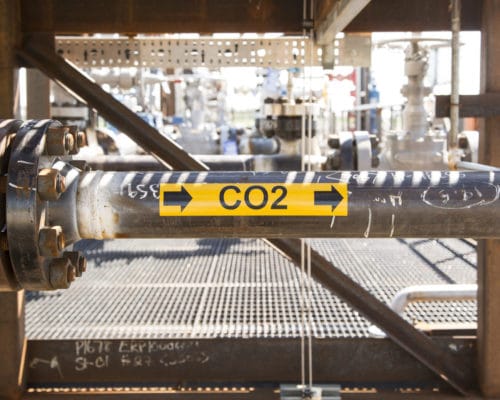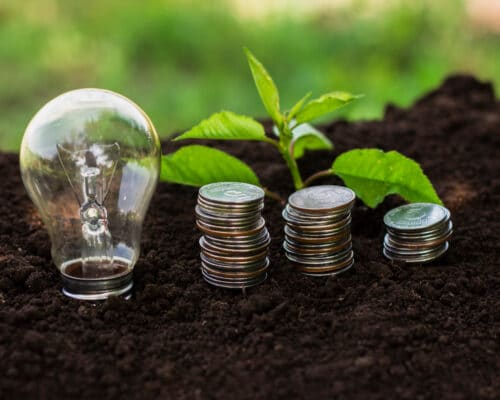Energy Transition Technologies: Deficiencies of the Japan-led Guidelines
20 March 2023 – by Viktor Tachev Comments (0)
The newly introduced transition finance guidelines for Asian countries focus extensively on energy transition technologies with questionable efficiency on cost decarbonisation. At the same time, they don’t pay the needed attention to renewables and energy system. Banks and countries that follow the guidelines blindly without considering their unique use cases risk delaying and derailing their net-zero journeys.
The ‘Banking on Transition Technologies’ Report: Examining Asia’s New Transition Finance Guidelines
September 2022 saw the publishing of two transition finance documents: the Asia Transition Finance (ATF) Guidelines by the Asia Transition Finance Study Group, a part of a Japan-led initiative, and the Technology List and Perspectives for Transition Finance in Asia by the Economic Research Institute for ASEAN and East Asia (ERIA).
The Banking on Transition Technologies: Beware of Lock-in Traps report by the Asia Research and Engagement (ARE) initiative analyses the guidelines.
While mostly agreeing with the proposals, the authors note that Japanese energy policies largely influence the guidelines. Due to this, they now reflect the Japanese authorities’ obsession with questionable energy transition technologies like carbon capture, utilisation and storage (CCUS) and ammonia co-firing across the power sector.
The report warns that the guidelines “may be inappropriate for countries in Southeast Asia where the circumstances differ from Japan” and where investing in renewable energy sources is viable.
ARE’s report cautions Asian banks from blindly following the guidelines. It also highlights the importance of avoiding the financial risks that might stem from it.
Guideline Loopholes and the Risks of Proposed Energy Transition Technologies
The main issue with the new transition finance guidelines stems from the technology list published by the ERIA. It promotes using energy transition technologies like CCUS and the co-firing of ammonia for the power sector, based on Japan’s strategy.
However, the report’s authors recognise this as the guidelines’ main weak point due to two main reasons.
1. The Failure to Account For Other Countries’ Circumstances
Southeast Asian countries all have their own unique situations. As a result, using the same guidelines as Japan for these nations does not address each country’s needs in a specific manner.
For example, Japan’s officials often cite energy security and diversity as a reason to invest in ammonia co-firing capacity. Currently, the country has a very low energy independence score. It relies on imports to meet nearly 96% of its energy needs.
However, such a strategy would further exacerbate the problem since Japan plans to import significant amounts of ammonia.
Furthermore, as ARE’s report reveals, Japan isn’t among the renewable energy champions. The country claims it has maxed out its opportunities to decarbonise through renewables. It also has among the highest construction costs for renewables.
However, this isn’t the case for many Southeast Asian countries. Most of SEA’s economies can take advantage of clean energy sources as the cheapest form of new power generation.
Other countries also might not face Japan’s land scarcity issue and have a much higher clean energy potential. For example, Vietnam has the technical potential for 600 GW of wind power. It can also continue building upon its exemplary solar power track record.
In addition, ARE’s report notes that countries like Malaysia, Thailand and the Philippines currently don’t face the same technical challenges as Japan. Furthermore, these nations can rely on more stable energy transition networks. They can easily scale renewables by building regional interconnections to address their collective needs.
2. Promoting Energy Transition Technologies That Risk Locking SEA Countries Into a Fossil Fuels Future
The guidelines are based on Japan’s energy transition technology policies. As a result, they would project their biases and deficiencies on Southeast Asian countries’ energy policies.
For example, they describe carbon capture technology as a solution for deep decarbonisation. However, they fail to properly account for the actual life cycle emissions of CCUS and ammonia co-firing technologies. Many analysts consider the proposed technologies questionable, with limited decarbonisation benefit. Research groups have consistently questioned those energy technologies’ commercial viability, effectiveness and cost competitiveness. They are described as tools for delaying rather than speeding up decarbonisation through renewables.
Japan’s ammonia co-firing plans go hand-in-hand with the idea of “clean coal”. Experts consider this a strategy to extend the life of its coal fleet. Meanwhile, there are solid arguments as to why such solutions are neither cost-effective nor good for the climate. For example, coal co-firing schemes using the cheapest ammonia source (grey) costs four times more than thermal coal. Using green ammonia is around 15 times more expensive than coal co-firing.
Due to these factors, the methods can work only as a complementary solution to a renewables-led energy policy. However, the blind application of the proposed guidelines and the mass application of ammonia co-firing and CCUS schemes without considering each country’s unique situation risk locking Southeast Asian nations into a fossil fuel future, derailing their net-zero journeys.
Renewable Energy Cost
Considering the rate at which the costs of renewables are dropping, investments in “clean coal” bear a massive stranded asset risk. Banks financing the energy transition infrastructure in the guidelines risk locking themselves into obsolete technologies. As a result, using these methods to align their portfolios with a net-zero pathway will be more challenging, ARE’s report warns.
What Southeast Asian Countries and Financiers Can Do
While the transition guidelines are a good first step for bringing Asian countries’ greenhouse gas emissions down, they can be further improved by using a case-by-case approach. Southeast Asian countries and financiers can use the guidelines as a foundation that can be tailored to each country’s specifics.
The ARE report advises that banks should compare transition technologies with green technologies for a more holistic evaluation. According to the authors, this is an area that the guidelines lack. Furthermore, financial institutions participating in transition financing should keep in mind that the LCOE for renewables may be much more cost-effective than the CCUS or ammonia co-firing approaches favoured in Japan. The ERIA Technology List does not directly compare the LCOE for transition technologies and renewables.
Due to cost and efficiency constraints, ARE’s report recommends limiting the financing for CCUS and ammonia co-firing only to hard-to-abate sectors. Examples include the cement and steel industries.
The proposed guidelines advise banks to follow country or sector pathways or, in the absence of such, the pathways of organisations like IEA and NGFS. However, ARE’s report goes a step further. The authors advise banks to develop robust internal underwriting standards for financing energy transition technologies. These standards should consider each unique country’s economic, policy and technological circumstances.
The Need for a Country-specific Approach
The ERIA Technology List suggests banks should invest in ammonia co-firing and CCUS in the power sector to ensure “a just and orderly” transition and align with net-zero goals. However, this isn’t the case.
Southeast Asian countries and banks should seek a more objective comparison between renewables and the proposed energy transition technologies. Otherwise, clean energy benefits, like portfolio risk reduction, falling costs, higher energy independence and the advancement of net-zero goals, might go under the radar.
A carbon lock-in situation is the last thing Southeast Asian banks and countries need.
by Viktor Tachev
Viktor has years of experience in financial markets and energy finance, working as a marketing consultant and content creator for leading institutions, NGOs, and tech startups. He is a regular contributor to knowledge hubs and magazines, tackling the latest trends in sustainability and green energy.
Read more



